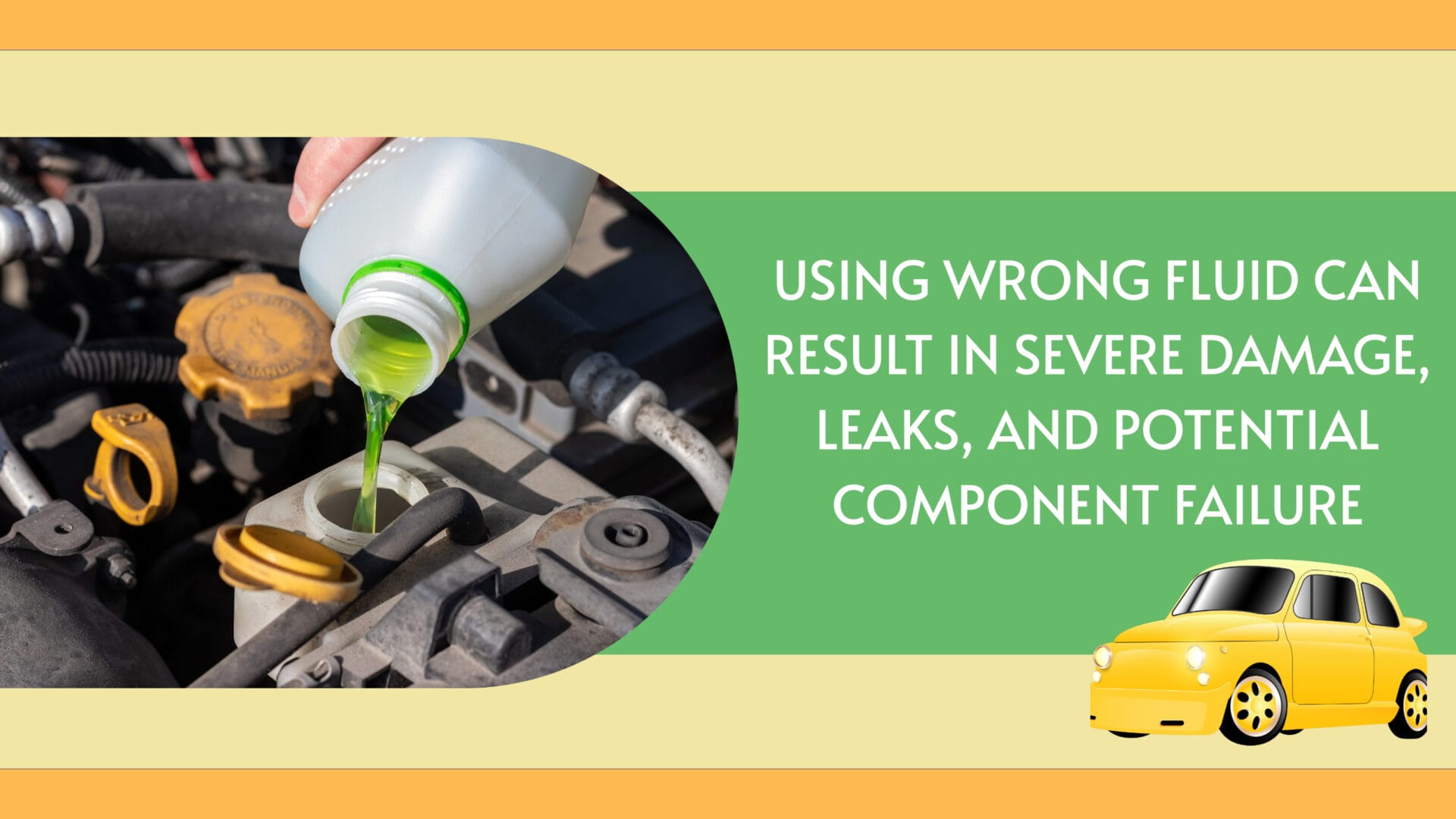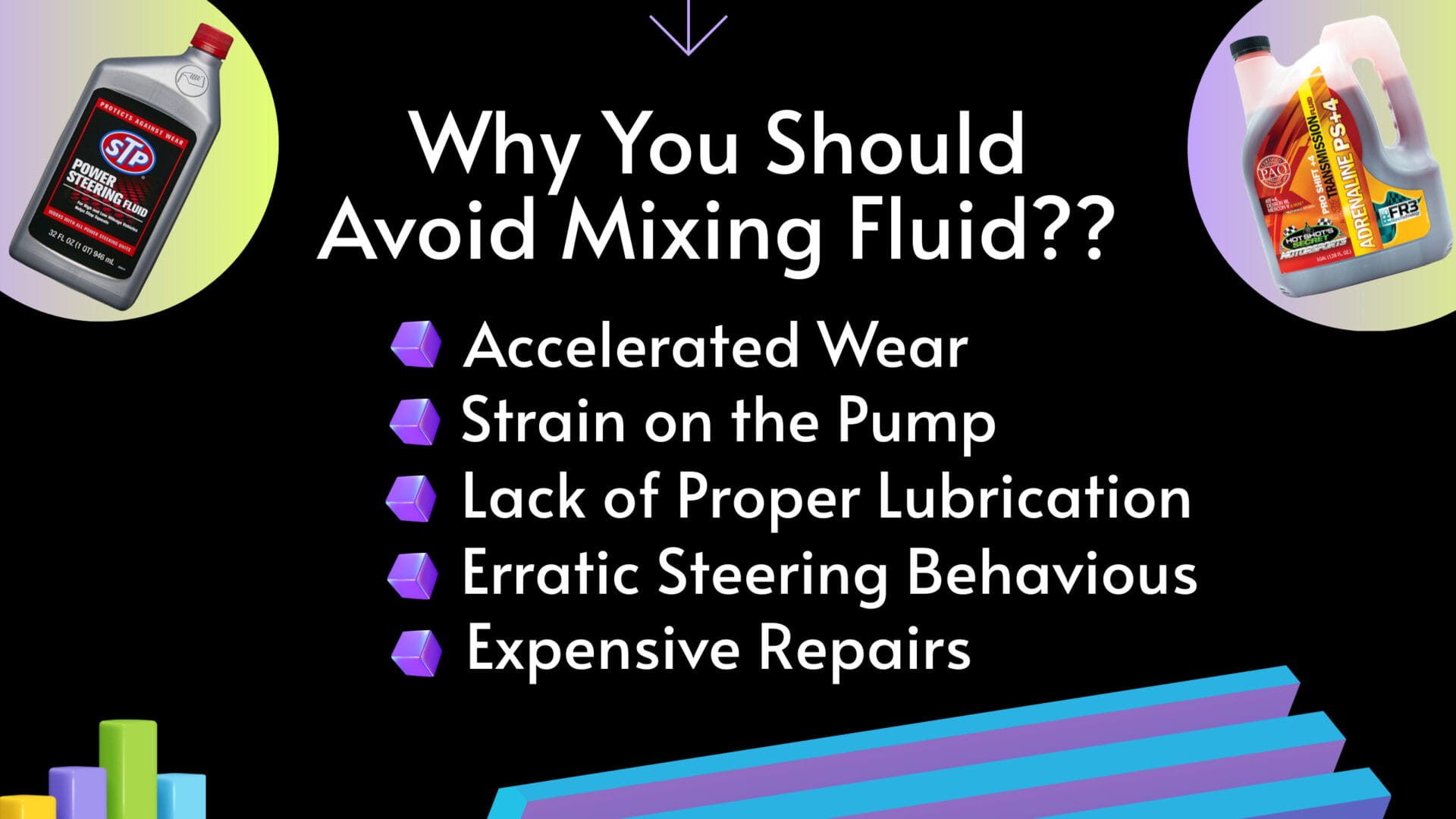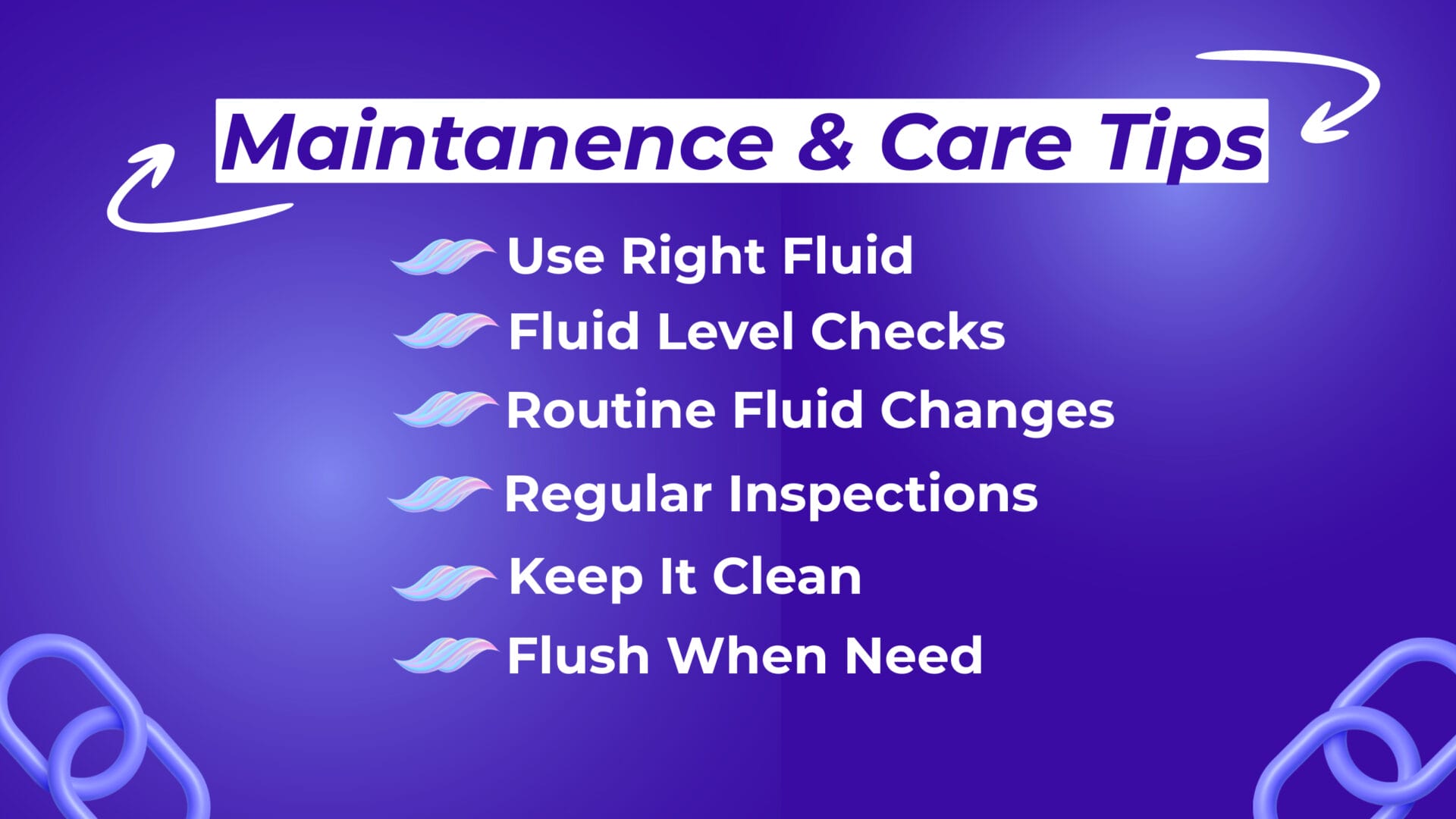Can I Put Transmission Fluid in My Power Steering
Yes, you can use transmission fluid in your power steering in a pinch when you need an immediate top-up. However, it’s a short-term fix with long-term consequences.
The high viscosity and detergent properties of transmission fluid can lead to a range of issues, including compromised steering performance and potentially expensive damage to your vehicle’s power steering system.
Curious to dive deeper and discover whether transmission fluid can truly come to the rescue when it comes to your power steering?
Whether you’re a seasoned car enthusiast or just learning the ropes of vehicle maintenance, understanding the nuances of using the right fluid is essential. Your car’s power steering system plays a pivotal role in your driving experience, and using the wrong fluid can throw a wrench into the gears of your automotive happiness. We’re here to ensure that doesn’t happen.
In this article, we’re delving into the nitty-gritty details and consequences of interchanging them and offering guidance on choosing the right fluid for your vehicle.
- Understanding Transmission Fluid & Power Steering Fluid
- Can I Put Transmission Fluid in My Power Steering?
- Can I Use Power Steering Fluid Instead of Transmission Fluid?
- Why You Shouldn’t Use Transmission Fluid in Power Steering
- Comparison Table of Transmission Fluid & Power Steering Fluid
- What Happens If You Use Wrong Fluid in Power Steering?
- Correcting the Mistake: What to Do if You’ve Used the Wrong Fluid
- Can I Interchange Power Steering Fluid & Transmission Fluid?
- Risks and Consequences of Mixing Fluids
- Power Steering System Maintenance and Care Tips
- Can Putting Transmission Fluid in Power Steering Lead to Coolant Leaks?
- FAQ
Understanding Transmission Fluid & Power Steering Fluid
Both transmission fluid and power steering fluid play important roles in a vehicle’s operation. Transmission fluid is vital for the transmission’s gear shifting and overall longevity, while PS fluid is essential for making steering more manageable and maintaining the power steering system’s functionality. Using the appropriate fluid for each system is crucial to ensure smooth and trouble-free driving.
So, before we dive more into using transmission fluid in the power steering system, let’s know about these two fluids in detail to make the right choice.

Transmission fluid
Transmission fluid serves as a lubricant, reducing friction between the various components of the transmission. It helps dissipate heat generated during transmission operation, preventing overheating and maintaining optimal performance. This minimizes wear and tear, promoting their longevity and smooth operation.
Transmission fluid contains detergents that clean and remove debris from the transmission, preventing the accumulation of sludge and ensuring its efficient operation. In automatic transmissions, transmission fluid is also a hydraulic medium that assists in gear shifting by transmitting pressure.
Power Steering Fluid
Power steering is an essential component of a vehicle; lubricating and cleaning its components is necessary to enable smooth and precise steering. The power steering system utilizes hydraulic pressure generated by the power steering pump to assist in turning the steering wheel more precisely. PS fluid is the magic elixir that makes this turn feel like a breeze.
By lubricating the system components (power steering pump, reservoir, valves, etc), aids in the dissipation of heat generated in the power steering system, preventing heat buildup and corrosion within the system. This reduces wear and tear and ensures its longevity.
Can I Put Transmission Fluid in My Power Steering?
Thinking about pouring transmission fluid into your power steering system?
Hold that thought!

While it might seem like a quick fix, here’s the scoop: While both fluids share some similarities, such as lubrication and heat dissipation, they are formulated differently to meet the specific requirements of their respective systems.
Using transmission fluid in power steering can make your steering feel like a workout, cause wonky steering behavior, and put extra stress on your power steering pump and gear.
Power steering needs lubrication for smooth operation, while transmission lubrication properties are gluey, which will make steering harder. It also has cleaning properties that can damage the power steering pump, costing you a replacement.
Can I Use Power Steering Fluid Instead of Transmission Fluid?
No, you can’t use power steering fluid instead of transmission fluid. Power steering fluid can’t provide the necessary gluey lubrication required by the transmission system, leading to slipping clutches in the transmission system.
Transmission fluid enhances friction between its internal components for better gripping power. While power steering fluid reduces friction and gathers power. PSF will lubricate the transmission components, but due to the lack of gluey properties, it will cause a slip between the components. And it may not handle the heat generated within the transmission, which will cause overheating and burn the gears.
Continuous use of it in the transmission may result in poor transmission performance, including sluggish acceleration, reduced fuel efficiency, and an overall diminished driving experience.
So, it’s always important to use the manufacturer-recommended transmission fluid for your vehicle’s transmission system to ensure its proper operation and longevity.
Why You Shouldn’t Use Transmission Fluid in Power Steering
Transmission fluid is thinner and tailored for the high-temperature environment of your transmission. Its role revolves around gear changes to ensure the efficient transfer of power from your engine to your wheels. So, it contains friction modifiers to keep the transmission running smoothly. It also has detergent properties for keeping things squeaky clean inside and anti-wear additives for longevity.
But this is not a power steering demand. Power steering needs a friendly assistant to handle the hydraulic pressure needed to make steering a breeze. It needs fluid with anti-foaming agents to ensure aeration doesn’t mess up your steering and anti-corrosion components to protect vital parts. Its only focus should be on helping you turn the steering wheel with ease, reducing friction between the components. Only then can you ensure your car responds effortlessly to your every command.
Transmission fluid can’t do that. Its friction additives will damage the power steering internal components, and prolonged use can cost you to replace a new power steering pump.
Comparison Table of Transmission Fluid & Power Steering Fluid
Buckle up, and let’s dive into the key differences between transmission fluid and power steering fluid, as well as their fascinating compositions, additives, and distinct properties.
| Transmission fluid | Power Steering Fluid |
| Facilitates smooth gear changes and maintains transmission components. | Assists in turning the steering wheel with ease to ensure smooth steering operation |
| There are two types of transmission fluid: automotive and manual transmission fluid. | Synthetic and mineral oil-based power steering fluids are available. |
| Have detergent additives and lubricating properties | Lacks detergent & friction modifiers |
| Red to brown color, smell sweet and mild. | Clear, pinkish, or amber color; smell like burnt marshmallow |
| Average lifespan 30,000 to 50,000 miles. | Average lifespan: between 50,000 and 75,000 miles. |
What Happens If You Use Wrong Fluid in Power Steering?
A power steering system runs smoothly when you use the correct type. The wrong fluid, like a suit that is two sizes too big, can spell trouble.

Imagine trying to fit a square peg into a round hole; it just doesn’t work. Using the wrong fluid can cause a host of problems. It can lead to erratic steering, increased wear and tear on your system, and potentially hefty repair bills down the road. We’re talking about a lot of bumps in the road when you are aiming for a smooth drive.
So, remember: choosing the right power steering fluid is like giving your car a warm, friendly hug—it’ll respond with smoother, more effortless steering. Stay with us as we uncover more steering secrets to keep your car running like a dream!
Correcting the Mistake: What to Do if You’ve Used the Wrong Fluid
So, you’ve found yourself in a bit of a fluid mix-up, and transmission fluid has found its way into your power steering system. Don’t worry; mistakes happen, but it’s essential to address the issue promptly and correctly. Here’s what to do if you’ve used the wrong fluid:
- The first step is recognizing the error. If you suspect the wrong fluid has been added, it’s best to refrain from driving the vehicle. Running the power steering system continuously with the wrong fluid can result in severe damage, leaks, and potential component failure.
- Then, identify whether it was indeed transmission fluid; if yes, you have to remove the drain and flush the power steering system for rectification. After removing the incorrect fluid, you have to refill it with the fluid recommended by your vehicle’s manufacturer.
- Flushing and refilling the power steering system is a task best left to professionals if you don’t have much time to take on this extra trouble. However, if you want, you can try the DIY flushing process. It’s not too difficult, either.
- However, after the system has been flushed and refilled, don’t forget to have the vehicle inspected by a qualified mechanic. They will inspect if the wrong fluid has already done any potential damage to the power steering system or not.
- To avoid such mix-ups in the future, it’s a good practice to label your vehicle’s fluids. and to consult your vehicle’s manual or the manufacturer’s recommendations for the right type of fluid to use in each system.
Can I Interchange Power Steering Fluid & Transmission Fluid?
To ensure the proper operation and longevity of your vehicle’s transmission and power steering systems, it’s essential to use the correct, manufacturer-recommended fluids for each. Mixing or interchanging these fluids is best avoided to prevent complications and potential damage.
So, you should avoid interchanging power steering fluid and transmission fluid. Each fluid is specifically formulated to meet the unique requirements of its respective system, and using the wrong fluid in either system can result in various problems.
Risks and Consequences of Mixing Fluids
It’s essential to understand that mixing fluids with different viscosities, additives, and compatibility in your power steering system can have a domino effect. It can result not only in immediate discomfort but also in long-term damage that demands professional attention.

Let’s know what consequences it can have.
- Erratic Steering: The wrong fluid can lead to erratic and unpredictable steering behavior, making your steering wheel harder to turn.
- Accelerated Wear: Due to the mismatch of properties, this mixed fluid can speed up the wear and tear on critical components, including the power steering pump and steering gear.
- Lack of Proper Lubrication: With properties unsuitable for the power steering system, the mixed fluid fails to provide the necessary lubrication. This can lead to friction, heat, and potential fluid leaks.
- Strain on the Pump: Continued use of such mixed fluid can place excessive strain on the power steering pump, eventually causing its failure.
- Costly Repairs: The cumulative effects of using the wrong fluid may result in significant damage, requiring expensive repairs or even component replacements.
Power Steering System Maintenance and Care Tips
A healthy power steering system keeps your driving experience hassle-free and smooth. Regular inspections, proper fluid changes, a cautious driving approach, etc. will go a long way in preventing future mistakes and maintaining the health of your power steering system.

Let’s know about a few more maintenance and care tips.
1. Regular Inspections: Make it a habit to inspect your power steering system periodically. Check for any signs of leaks, unusual noises, or difficulty in steering. Early detection of issues can prevent more extensive and costly problems.
2. Fluid Level Checks: Keep an eye on your power steering fluid levels. Low fluid levels can lead to inadequate lubrication and, in turn, damage to the system. If you notice a drop in fluid levels, it’s essential to identify and address any underlying issues promptly.
3. Routine Fluid Changes: Regularly change your power steering fluid as recommended by your vehicle’s manufacturer. Fresh fluid helps maintain proper lubrication and prevent component wear.
4. Use Right Fluid: Always use the manufacturer-recommended power steering fluid. Avoid the temptation to use substitutes, as this can lead to serious issues. Label your vehicle’s fluids to prevent mix-ups.
5. Keep It Clean: Ensure that the power steering reservoir and cap are free from contaminants. Any foreign material entering the system can cause damage. A clean system is a healthy system.
6. Professional Maintenance: Consider professional maintenance of your power steering system to identify and address any potential problems before they escalate.
7. Drive Cautiously: Avoid sudden, harsh steering maneuvers, as these can put extra strain on the power steering system. Smooth and controlled steering is easier on the components.
8. Flush the System: If you’ve had a fluid mix-up, have your power steering system flushed by a professional to remove any mixed or incorrect fluids.
By following these maintenance and care tips, you can ensure that your power steering system remains in excellent condition, providing you with responsive and reliable steering.
Can Putting Transmission Fluid in Power Steering Lead to Coolant Leaks?
Putting transmission fluid in power steering can cause coolant leaks, leading to engine damage. To avoid the risks and precautions of coolant leaks, it is important to use the correct fluid for each system. Always check your vehicle’s manual and seek professional advice if unable to understand what to do.
FAQ
u003cstrongu003eWhat Happens If You Put Transmission Fluid in Power Steering Pump?u003c/strongu003e
If you put transmission fluid in the power steering pump, it can cause system malfunctions, leaks, and even engine damage due to its different additive properties. Therefore, it’s important to use the right fluid for each specific system to ensure optimal performance and prevent potential issues.
u003cstrongu003eIs ATF Thicker Than Power Steering Fluid?u003c/strongu003e
No, ATF is a thinner fluid than a power steering fluid.
u003cstrongu003eIs Transmission Fluid Better than Power Steering Fluid?u003c/strongu003e
Transmission fluid and power steering fluid are both hydraulic fluids but designed for different uses with different properties. Both are best in their own places. If you are asking about using one in another place, no transmission fluid is not better than power steering fluid.
u003cstrongu003eWhat Fluid is Best for Power Steering?u003c/strongu003e
Different fluid is best for a different brand. For example, if you are using a Honda, you will need a specific PS fluid of the Honda brand that is designed for that car. But if you are using a Ford, you can use any ATF fluid as well. u003cbru003eu003cbru003eSome of the best power steering fluids are Honda power steering fluid, Fram AS261 Power Steering Fluid, Lubegard 23232 Power Steering Fluid, Johnsen’s 4611 power steering fluid, and Lucas Oil Power Steering Fluid.
u003cstrongu003eWhat Kind of Fluid Do You Put in Power Steering?u003c/strongu003e
I always try to put manufacturer-recommended fluid in my power steering for best performance, safety, and damage-free power steering. Power steering synthetic fluid is my first choice, and if mentioned, I also use mineral-based power steering fluid. If not in too much emergency, never use something else like automatic transmission fluid.
u003cstrongu003eCan I Use ATF 4 for Power Steering Fluid?u003c/strongu003e
Yes, you can use ATF 4 for power steering fluid, but it may not be the best choice for your power steering system. Using it in your power steering system could potentially damage the system over time.
Final Words
Using transmission fluid in your power steering system is not recommended. While both are hydraulic fluids and may seem similar, both have different properties and are specifically formulated for their intended use.
Mixing these fluids or using one instead of the other can lead to damage, leaks, and costly repairs.
So, stick to using the right fluid for the right purpose and keep your vehicle running smoothly. Taking proper care of your power steering system will ensure smooth and reliable steering for years to come.






